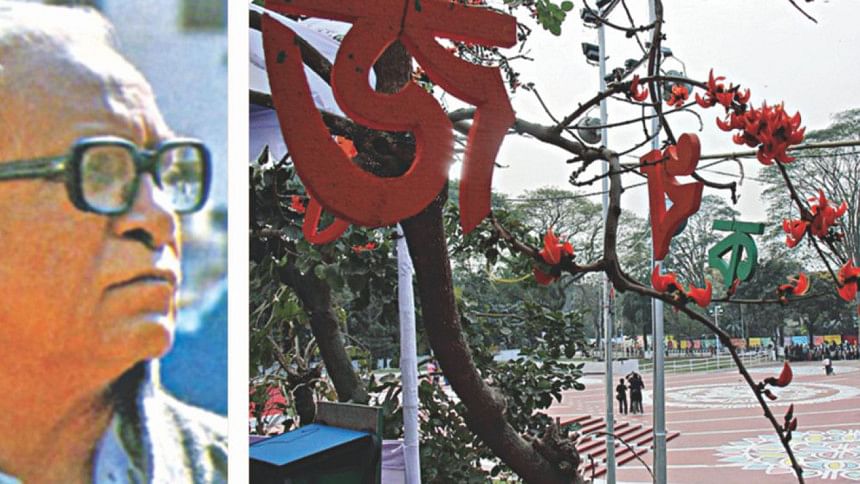Potua and freedom's colours

As the mercury steadily dropped, the chill in the air felt starkly different from the fiery situation prevailing everywhere across the country. This was early February, the year 1971. The mass upsurge of 1969 followed by the non-cooperation movement in 1971 against the Pakistani regime had pushed the country to a point of no return.
Shumona faintly recalls her days with her father, acclaimed artist Quamrul Hassan (1921-1988), at their Central Road residence. Quamrul was then chief designer of the erstwhile East Pakistan Small and Cottage Industries Corporation (EPSCIC), now Bangladesh Small and Cottage Industries Corporation (BSCIC). But his day job was quite different from what occupied his time at dead of night. For then, his home would become the gathering place for scores of artists from the Arts College, who shared a similar dream of an independent Bangladesh. The group would tirelessly work under the maestro's guidance, designing and creating huge anti-regime posters. Little Shumona Hassan enjoyed watching the young artists make buckets of glue and using poster colours from big jars. Before sunrise the students would fan out, boldly setting up the anti-oppression posters all across the capital.
February 21 was approaching. In that on-going fervour of nationalism, political, social and cultural activists had united under a single banner. Working non-stop over the following days, Quamrul Hassan and his group used their brushes to completely transform the road leading to the Central Shaheed Minar, turning it from a blackened pathway to one painted with bright and traditional alpana. The crimson was a vivid reminder of the blood that the country had pledged to keep the dream of independence alive.
A huge tree beside the Shaheed Minar was chosen as a symbolic landmark. It was decorated with Bangla alphabets and named the Okhhar Brikhho (alphabet tree) to reflect the vitality of the Bengali language.
This was Quamrul Hassan. Active, energetic and ever innovative, he would spend hours doodling in his sketchbook, the cigarette packet or whatever served as a drawing board. Even while serving in-exile as director of the art division of Bangladesh's information and radio department, he drew the ferocious caricature of Yahya Khan, titled “Annihilate These Demons”, that later attained an iconic status.
Besides his mastery in the art world, Quamrul Hassan was also extremely adept in the performing arts. He used to frequent Vastukalabid, at Paribagh, the gathering place of stalwarts from the political, cultural and intelligentsia. Students of all ages would gather at the lush green gardens to get Brotochari Nrittya lessons from Quamrul Hassan.
As the month of February dawns upon us, it seems an opportune time to reflect on Quamrul Hassan's contribution to the spirit of freedom. It is an opportune time to realise how it is not always violence that prevails, but rather the deep-rooted spirit of liberty that pulls the country through the darkest times.
It is an opportune time to wish that his crimson brush-strokes on the Shaheed Minar had not merely painted the pathway, but tinted the spirits of millions to keep the spirit of freedom alive.
Today marks the 30th death anniversary of Patua Quamrul Hassan. The Faculty of Fine Art (FFA), University of Dhaka (DU) together with the Department of Graphic Design has organised a discussion with a documentary screening today at 10:30am at Lecture Theatre, FFA, DU. Eminent artists -- Professor Samarjit Roy Choudhury and Professor Rafiqun Nabi, Sumona Hassan, daughter of Quamrul Hassan, Abul Hasnat, Editor of Kali O Kalam, and Dr. Syed Azizul Haque, Professor, Department of Bangla, DU, will discuss and share their memories of the artist. Professor Nisar Hossain, Dean, FFA, DU, will preside over the programme while Reza Asad Al Huda Anupam, Chairman, Department of Graphic Design, DU, will deliver welcome addresses at the event. They will place wreaths at Patua's grave at 9am this morning.

 For all latest news, follow The Daily Star's Google News channel.
For all latest news, follow The Daily Star's Google News channel. 



Comments